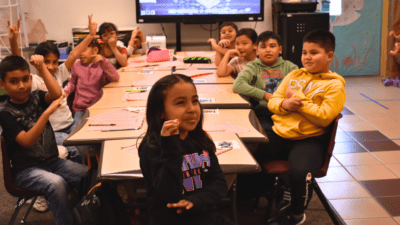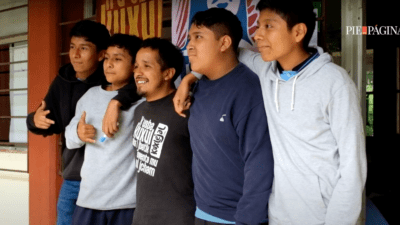The pervasive and often seemingly inescapable struggles facing America’s families with children came into stark relief with the onset of the COVID-19 pandemic. As the federal government moved to act, families across the nation benefitted from expanded care packages and family support policies. But just as COVID case counts have steadily decreased and plateaued, fiscal and federal support for these crucial policies has waned, leaving many families once again slipping through the cracks.
While a number of policies and provisions have improved the lives of America’s children in the past two years – and their loss now puts those same children’s flourishing at risk – access to child care particularly stands out. In April 2020, the child care services industry lost over a third of its workforce, compared to an average 16 percent loss in the private sector in the same month. Between mandated closures, parents opting out of child care, and lost profits, many child care providers sought other employment and many child care locations closed or reduced their hours. While other industries have largely recovered, child care employment remains 8 percent below its level pre-February 2020.
Child care providers have particularly struggled to keep care centers staffed. The jobs are often paid at minimum wage or entry-level rates, making turnover high as staff transition into better-paying industries. Meanwhile, city, state, and federal laws require a specific ratio of staff to children – usually one caregiver to three to five kids, depending on the area and their ages. The result: Wages are low, but costs to families are high.
According to the U.S. Census Bureau, the average American family spends about seven percent of its monthly income on child care. But poorer families on average spend four times as much compared to higher income families, up to 35% of a single parent’s income.
When federal subsidies and relief programs began to dry up, some states took action. New Mexico had been the focus of a decades-long child-centered movement powered by parents, teachers, tribal and community leaders, childcare advocates, nonprofits and policy experts. WKKF grantee partners like the OLÉ Education Fund had worked tirelessly to advocate for universal access to early learning for children from birth to age five.
With the painful realities of child care needs laid bare by the COVID-19 pandemic, the hard work of the movement partners began to pay off. In July 2020, New Mexico celebrated the official launch of the first state agency focused on services from birth to age five: the Early Childhood Education and Care Department (ECECD). The state also created the first cabinet post focused on early childhood education and care, filled by Elizabeth Groginsky.
The new department and cabinet secretary got to work quickly. In May 2022, New Mexico became the first state in the nation to offer free child care to the majority of its residents. Governor Michelle Lujan Grisham announced the state would expand its Childcare Assistance Program to qualifying families earning up to 400% of the federal poverty level ($111,000 for a family of four). These families no longer owe copays for child care services, making child care cost-free as of May 2022. ECECD estimated that more than 30,000 families would newly qualify for free child care.
Under Governor Lujan Grisham, the state also moved to establish minimum wage for child care workers. Entry-level staff will earn $15 an hour, and more experienced teachers start at $20 an hour. Before the state-wide raises, workers could earn more working at local fast-food chains than providing child care.
In its recent 2022 roadmap summary, WKKF grantee Prenatal-to-3 Policy Impact Center noted that New Mexico is “leading the way” on child care subsidies and early intervention. Its affordable child care subsidy program was praised for “its high eligibility threshold, use of a cost-estimation model, and significant efforts to lower family costs over the last year.”
Federal relief funds that had been keeping many children, parents, families and child care centers afloat were due to run out in June 2023. Then in November 2022, New Mexico made history again, with 70.3% of voters approving a constitutional amendment to make funding for early childhood programs a part of the state constitution. The vote increases spending for early childhood education by almost $150 million.
The children, families, and child care providers of New Mexico are only beginning to see the positive effects of the hard work of so many advocates. In an op-ed for the Albuquerque Journal, secretary Groginsky writes:
We now know that 80% of brain development for children occurs in the first three years of life and that, for every $1 we invest in high-quality early childhood programs and services, we receive up to $12 back in the form of lower dropout rates, better mental and physical health, reduced criminal justice system involvement, greater economic stability – the list goes on. … Today, New Mexico is the yardstick against which other states measure innovation and bold action toward building a world-class early childhood education and care (ECEC) system.
Elizabeth Groginsky, cabinet secretary for Early Childhood Education
Read More
- Every Child Thrives: Working moms are critical to a thriving economy. It’s past time to support them
- Albuquerque Journal: Voters approve amendment to spend more money on early childhood education
- CNN: New Mexico voted a child care guarantee into its constitution. For one mom, it means her 8-year-old doesn’t worry about money anymore








Comments